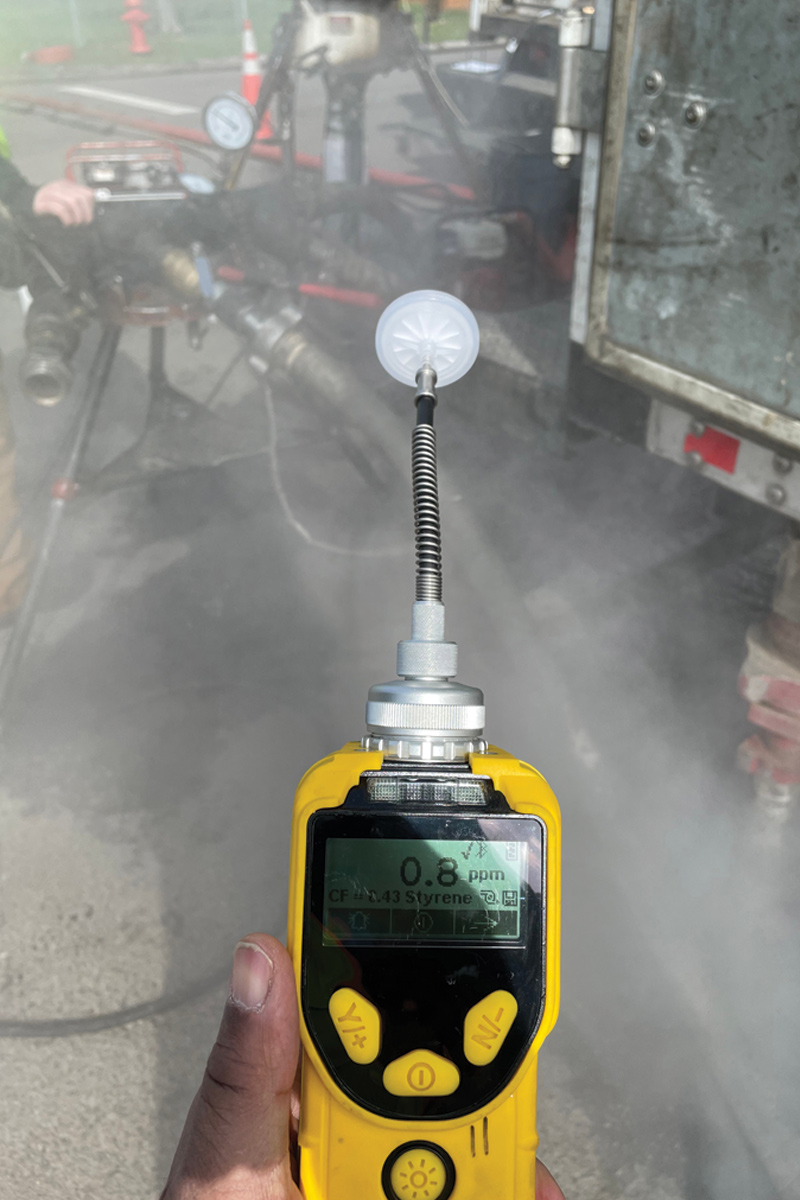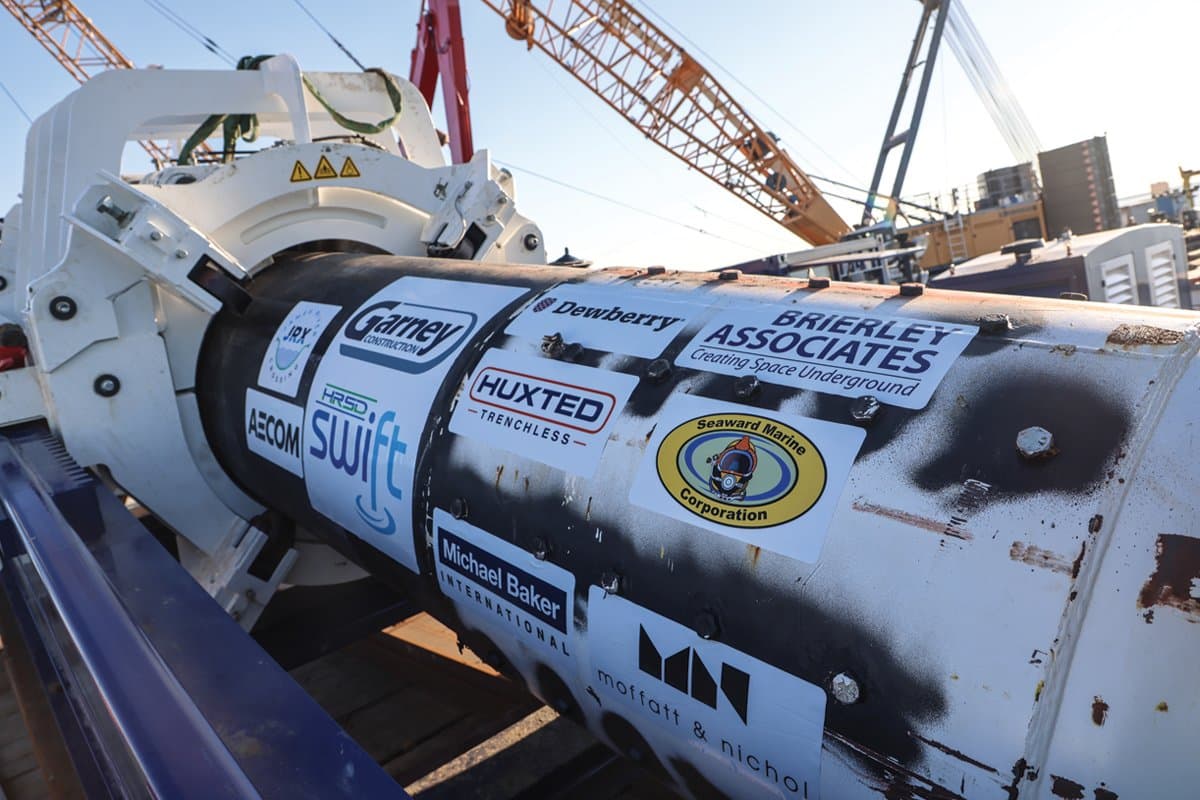
How to Mitigate Styrene Emissions During a CIPP Installation
When an owner is looking to rehabilitate their existing sewer line, several options can come to mind: dig and replace, geopolymer or cured-in-place lining, for example. When an owner doesn’t want to dig up a road or needs the repair done quickly, cured-in-place pipe (CIPP) lining systems may be the best solution.
CIPP consists of two major components: felt and resin. Each component serves a purpose in the overall performance of the installed product. The felt is used as a containment device for the resin system, which provides overall strength to the system.
When selecting the appropriate resin, there are several main factors for sewer applications: physical properties, chemical resistance, time to cure and cost.
From a contractor’s perspective, to optimize the installation, cure time is vital. Looking into the industry, there are three main resins typically discussed or proposed in project specifications: polyester, vinyl ester and epoxy.
Resins for CIPP
On average, about 90 percent of the resin used for CIPP applications is polyester due in large part because it meets the chemical and physical requirements of ASTM F1216, while also offering the lowest cost and quickest cure time on the market.
The main component of the polyester resin used in CIPP applications is an unsaturated polyester chain, i.e. dibasic acids, which is then dissolved in a reactive diluent, most commonly styrene. The need for this reactive diluent or styrene is to ensure the resin cross-links and solidifies.
It is important to note that while there are other reactive diluents used in the industry creating styrene free resins, they are expensive and typically can only be purchased in small quantities. As a point of reference, it is also key to understand that styrene is naturally occurring in nature, i.e. strawberries, coffee, but it is also used for a variety of applications outside of the CIPP industry, including windows, doors, vehicles, marine construction, and clothing. This means the availability of the product is not going to be diminished anytime soon.
Considering its cost-effective nature, styrene is the main reactive diluent for most polyesters resins used within the CIPP industry. Furthermore, styrene also allows the polyester resin to be less viscous and ensures CIPP liners can be wet-out effectively at a controlled facility.
Since it is a chemical that is not likely to go away anytime soon, the CIPP industry has developed several mitigation techniques to help reduce the existence of styrene on-site without compromising on quality or price.

Styrene Mitigation Areas
The suggestions presented in this article have been corroborated by research conducted in collaboration with CIPP manufacturers/installers, NASSCO and the Trenchless Technology Center.
Figure 1 (featured at the top of this post) shows the areas of focus for this article and Figure 2 (below) shows an example of the styrene measurement device used to evaluate the suggestions provided.
Area 1 – At the Reefer Truck
When the liner is shipped from a controlled wet-out facility to the jobsite, styrene will build up in the back of the truck. Mitigation techniques include:
- Opening the doors and allowing the styrene to vent out for at least 30 minutes prior to letting anyone into the reefer, which ensures the styrene concentration is below government limitations.
- Choosing a CIPP product with a styrene barrier built into the system, which encapsulates the styrene into the liner and doesn’t allow it to escape into the refer.
Area 2 – At the Steam Stack
Some liner installations have a ventilation point when steam is used to cure. At times, this can vent out styrene into the atmosphere. Of all the areas to focus mitigation efforts, this has been the main focus for owners and the general public. Mitigation techniques include:
- Ensuring the steam stack is set up at least 8 ft in the air so that steam is released above the public.
Setting up a parameter around the steam stack of at least 10 ft. Research has shown that styrene dissipates into the atmosphere quickly and at 10 ft from the manhole the styrene levels drop off significantly. - Choosing a CIPP product with a styrene barrier built into the system, which ensures a majority of the styrene doesn’t get released through the steam and reduces the styrene smell to the public.
- Having the steam vent filter the styrene through a carbon filtration unit or other device to reduce the styrene smell to the public.
Area 3 – At the Lateral
During some liner installations, the polyester resin is exposed directly into the adjacent lateral. Mitigation techniques include:
- Sending out appropriate communication to the residence of the installation and including a message to ensure they have a working P-trap.
- Choosing a CIPP product that provides a barrier at the lateral, which ensures the styrene doesn’t go into the lateral.
The above-mentioned suggestions may seem simplistic but honestly that is the point. The use of CIPP has only grown over the last 50 years, due to its cost-effective nature and minimal disruption to the community at large. This has resulted in the number of installations continuing to climb, which has increased the overall exposure to styrene.
To continually expand the use of CIPP as a viable rehabilitation option, the industry should continue to develop ways to protect the public without increasing the overall cost of the CIPP installation.




